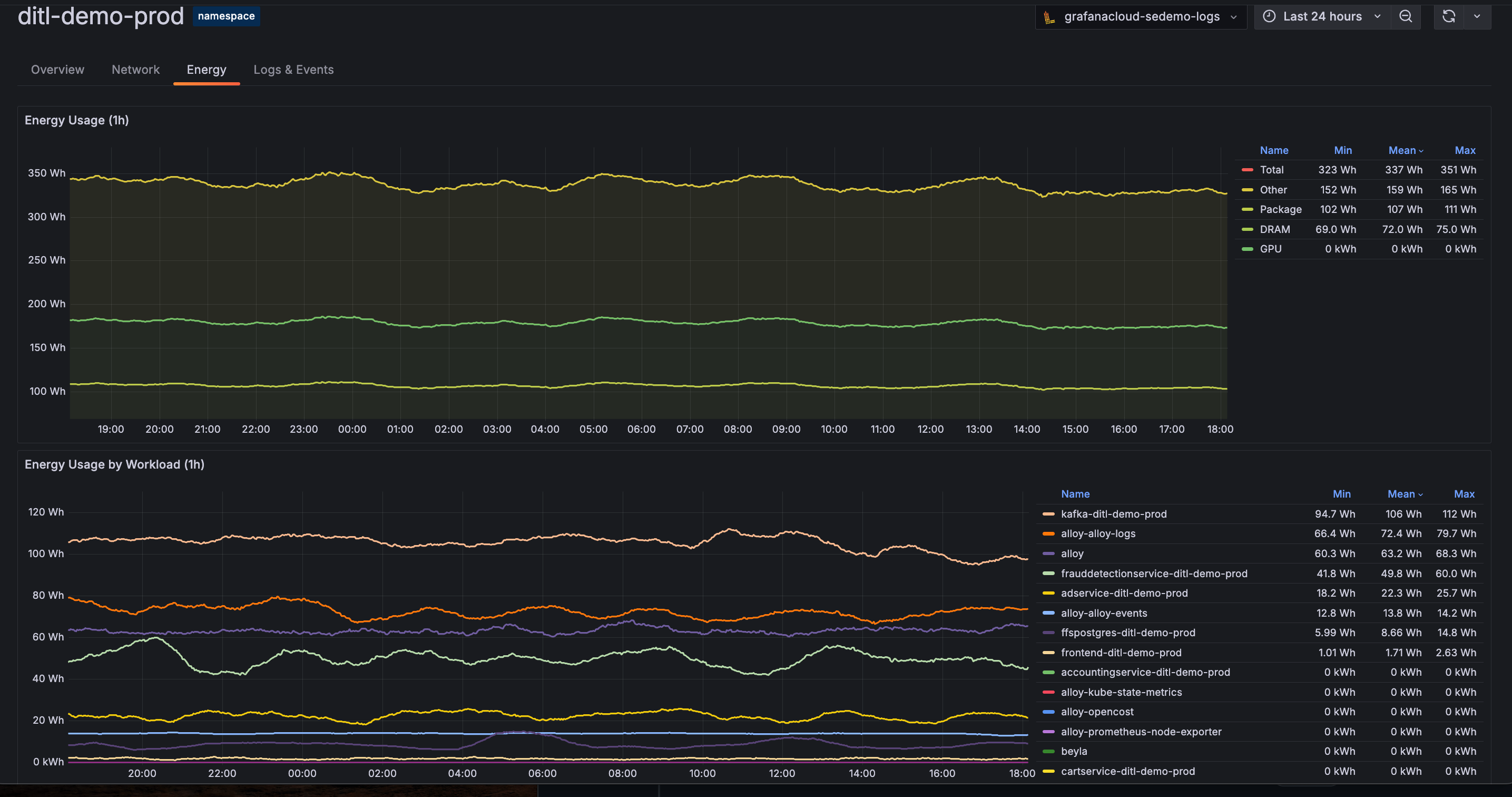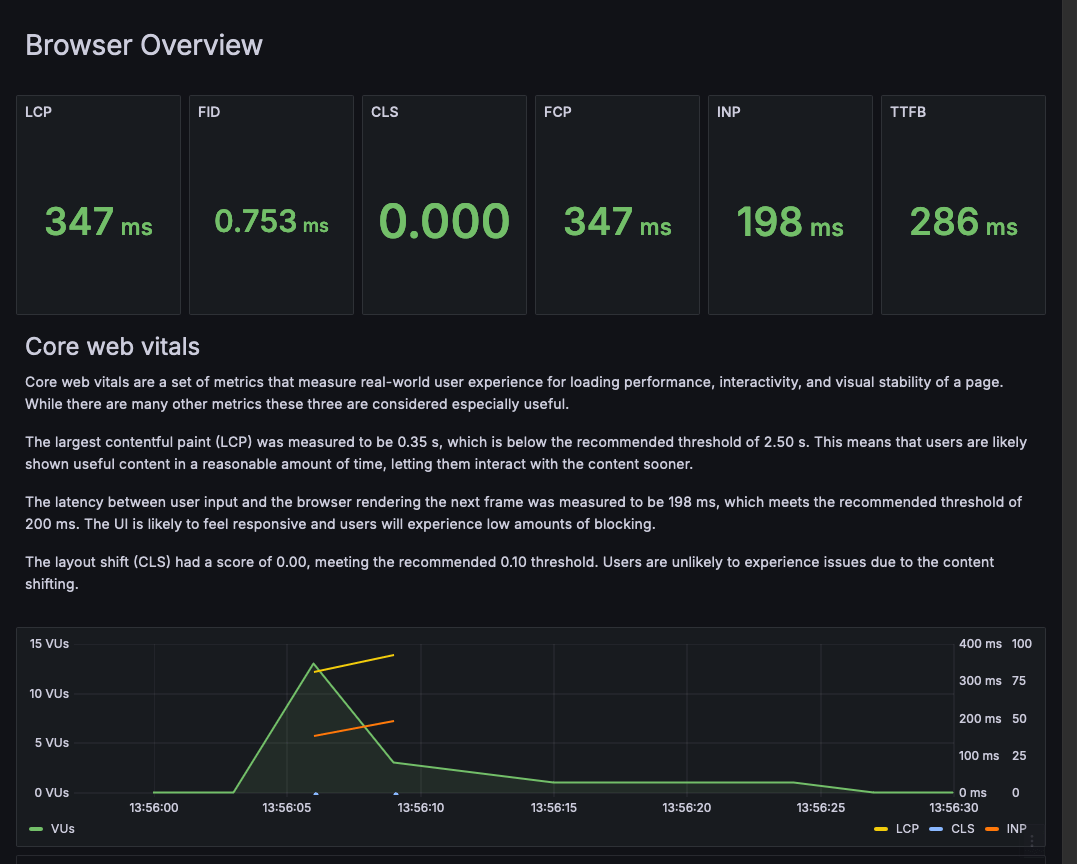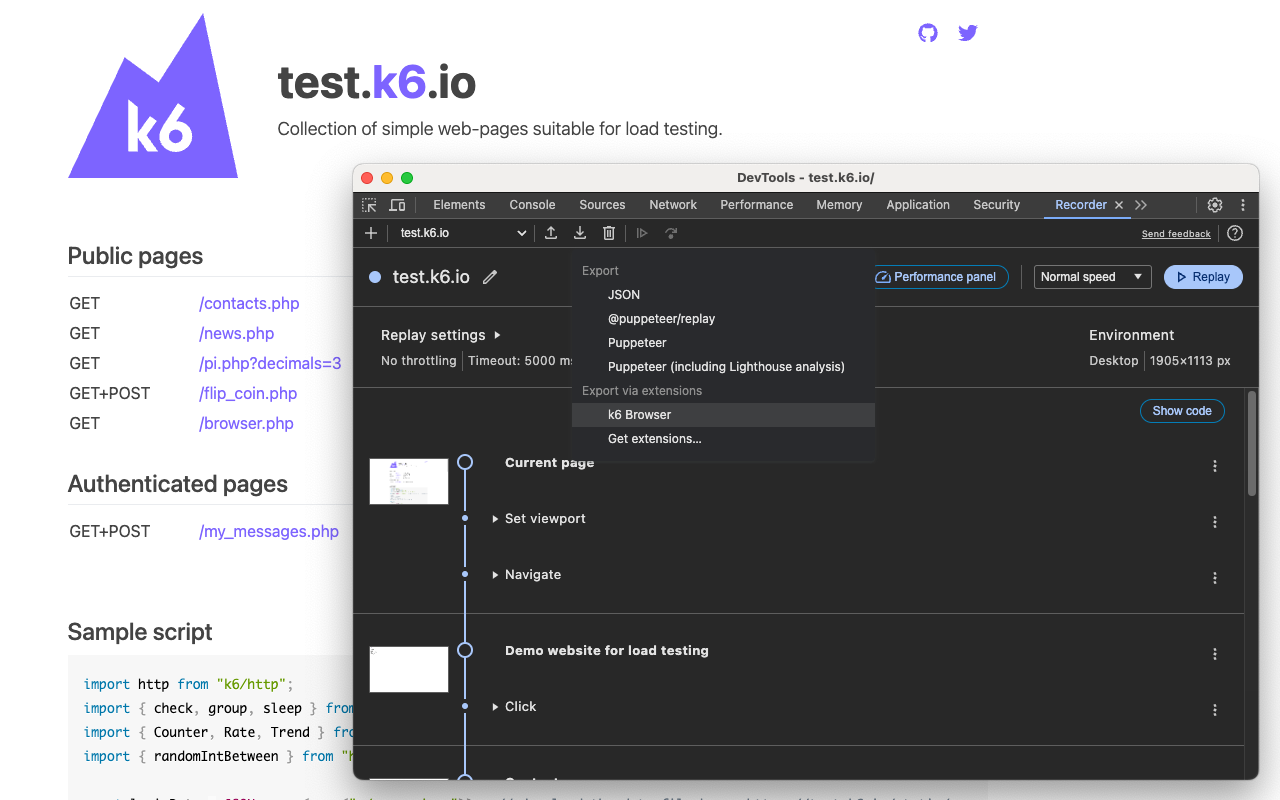What’s new in Grafana Cloud
Grafana Labs products, projects, and features can go through multiple release stages before becoming generally available. These stages in the release life cycle can present varying degrees of stability and support. For more information, refer to release life cycle for Grafana Labs.
No results found. Please adjust your filters or search criteria.
Drone data source
Energy data available for Kubernetes
View energy data for your Kubernetes infrastructure components through Kubernetes Monitoring.

Native Histograms
Native histograms are a data type in Prometheus that can produce, store, and query high-resolution histograms of observations. It usually offers higher resolution and more straightforward instrumentation than classic histograms.
If you would like more information, you can take a look at the video presented at the conference.
Cloudwatch Metric Insights cross account observability support
We are excited to announce support for cross-account querying in Metric Insights query builder for AWS Cloudwatch Plugin. This enables building SQL queries to monitor across multiple accounts in the same region in AWS Cloudwatch.
This feature introduces an account dropdown for selecting one or all of your source accounts and builds a query that targets them. Furthermore, results can be grouped by account ID by selecting “Account ID” in the Group By dropdown.
For more complex queries that are not covered by the options in the builder you can switch to the manual Code editor and edit the query.
To set up cross-account querying for AWS Cloudwatch Plugin, see instructions here.
Export Grafana Cloud k6 browser tests to a dashboard summary
We’ve recently announced that Grafana Cloud k6 browser tests are generally available, and now you can export your browser test results as a Grafana dashboard.
Browser testing measures the performance and UX of web applications, including important metrics such as the Core Web Vitals. The exported summary breaks down each metric and explain the impact the performance of your application might have on users. Sharing the summary with your team and other stakeholders can help pinpoint areas that could use optimizations in order to create the best possible user experience.

Integrate Grafana Cloud k6 into your CI/CD pipeline with new k6 GitHub Actions
We have released two new k6 GitHub actions to make it easier to automate your Grafana Cloud k6 performance testing suite and projects.
You can now use the setup-k6-action to install a specific k6 version in your CI/CD workflow. This action provides flexibility when running multiple testing projects and faster execution of testing jobs.
Chrome Recorder extension for exporting k6 browser scripts
We’ve recently announced that browser tests in Grafana Cloud k6 are generally available, and you can use them to better understand your application’s user experience and fix frontend performance issues. But creating browser test scripts can be a complex task, which is why we’re releasing the k6 DevTools Recorder Chrome extension!
With the k6 DevTools Recorder Chrome extension, you can record user flows from a website using the Chrome DevTools Recorder, and then export that as a k6 browser test. That can help you create test scripts quickly, or give you a starting point to then customize your browser script to fit your needs.

Grafana SLO Folder RBAC
We’d like to announce that we have implemented a preliminary version of folder scoped SLO actions! Now, users that are Folder Editors on a specific folder, can create, update, and delete SLOs associated with those folders. They will continue to be able to view SLOs in other folders, but those SLOs cannot be editable by users who do not have Folder Editor access.
How To Implement - User who can Edit SLOs in a Particular Folder
- As a Grafana organization administrator, ensure that the specific user has a Viewer Basic role and the SLO > SLO Writer role
- In the left-side menu, click Dashboards and navigate to the Folder you want to add permissions for.
- Click Folder Actions and select Manage permissions from the dropdown.
- Click Add a permission and grant the specific user Folder Edit permissions.
- This user should now be able to view, create, update, and delete SLOs restricted to that particular Folder.
Centralized alert history page
View a history of all alert events generated by your Grafana-managed alert rules from one centralized page. This helps you see patterns in your alerts over time, observe trends, make predictions, and even debug alerts that might be firing too often.
An alert event is displayed each time an alert instance changes its state over a period of time. All alert events are displayed regardless of whether silences or mute timings are set, so you’ll see a complete set of your data history even if you’re not necessarily being notified.
Roadmap for new data sources
We are delighted to share a new public roadmap for data source plugins being built by Grafana, our partners and our community. All existing and potential users of Grafana can now see our current plans and request new plugins, upvote existing requests, or comment with ideas and requirements.
Links to the roadmap and requesting a new data source have recently been added to the Connections view in Grafana Cloud, as shown in the video below. Similar links will be available in Grafana OSS and Grafana Enterprise soon.
Role-based access control in Grafana Cloud k6
Role-based access control (RBAC) is now available in Grafana Cloud k6!
With the new Performance Testing roles available in your Grafana Cloud stack, you get fine-grained control over what a User or Team can do in the k6 Performance Testing application, regardless of their Grafana Stack role.
API support for LDAP configuration
The SSO settings API has been updated to include support for LDAP settings. This feature is experimental behind the feature flag ssoSettingsLDAP.
You will soon be able to configure LDAP from the UI and Terraform.
API and Terraform support for SAML configuration in Grafana
The SSO settings API has been updated to include support for SAML settings. The UI has also been updated to use the new API instead of the old Settings update at runtime API which is now deprecated and will be removed in a future version of Grafana.
You can now manage SAML configurations as code from Terraform using the grafana_sso_settings resource.
Cloud Insights in Grafana Cloud k6 is generally available
Grafana Cloud k6 Cloud Insights is generally available! Cloud Insights can help you automatically identify potential issues in your system under test or k6 test script and get more accurate and insightful results from your performance tests.
Cloud Insights analyzes telemetry data, such as metrics, logs, and traces generated during a test run, to identify issues and make recommendations on how to fix them. This can help you and your team save time when pinpointing the root cause of performance issues in your applications.
Explore Logs
We are excited to release Explore Logs to most of our Cloud customers in public preview!
Explore Logs helps developers quickly troubleshoot and gain insights from logs without needing to run a query.




